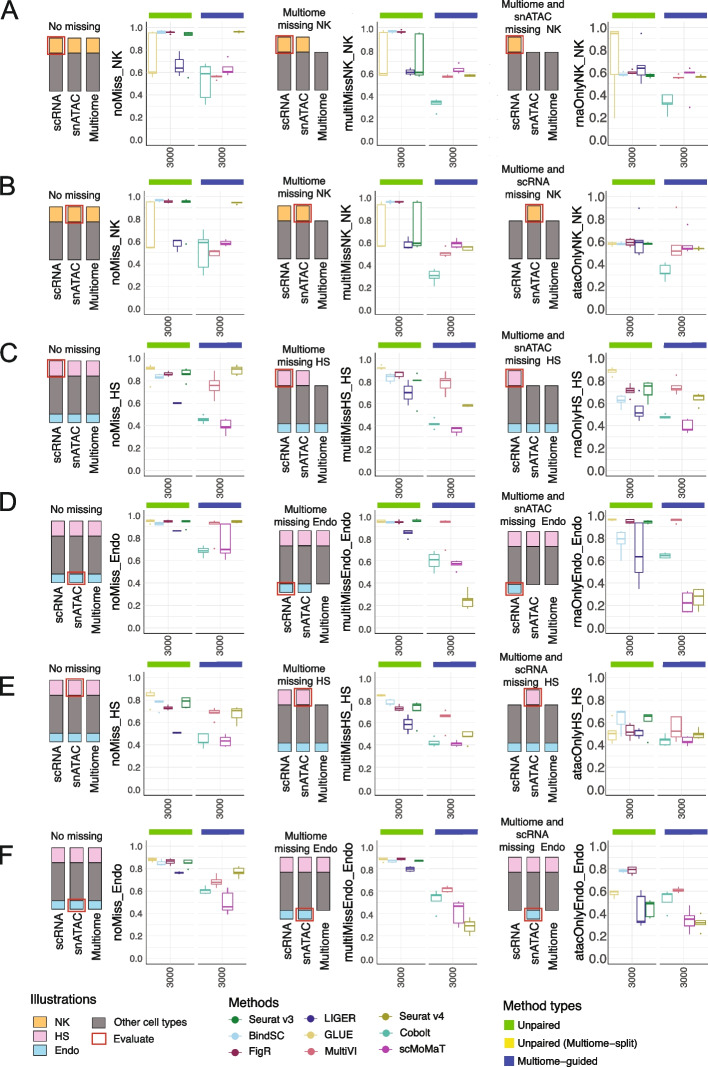Fig. 8.
Evaluation of rare cell recovery when the multiome dataset or two of the three datasets to be integrated miss the rare population of cells. A, B F1 score of recovering “Natural Killer” (NK) cells in PBMC-simulated situations. A F1 score of recovering NK cells in scRNA-seq at the baseline situation (left), versus when multiome does not have NK cells (middle), versus when multiome and snATAC-seq do not have NK cells (right). B F1 score of recovering NK cells in snATAC-seq at the baseline situation (left), versus when multiome does not have NK cells (middle), versus when multiome and scRNA-seq do not have NK cells (right). C–F F1 scores of recovering “Hair Shaft” (HS) cells or “Endothelial” (Endo) cells in SHARE-seq-simulated situations. C, E F1 score for recovering HS (C) and Endo (E) in scRNA-seq at the baseline situation (left), versus when multiome does not have the cell type (middle), versus when multiome and snATAC-seq do not have the target cell type (right). D, F F1 score for recovering HS (E) and Endo (F) in snATAC-seq at the baseline situation (left), versus when multiome does not have the cell type (middle), versus when multiome and scRNA-seq do not have the target cell type (right). For all box plots, the whisker is 1.5 times the inter-quartile range

